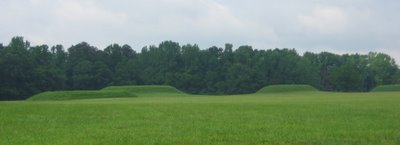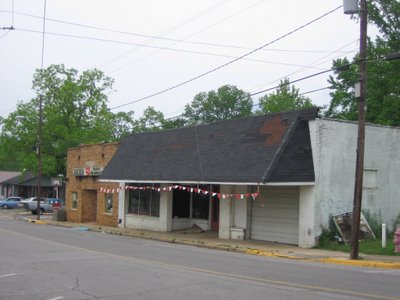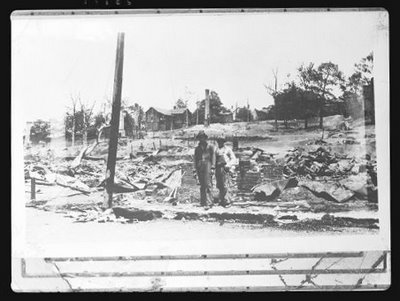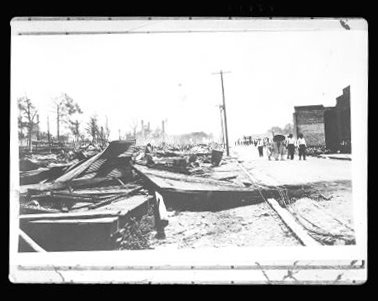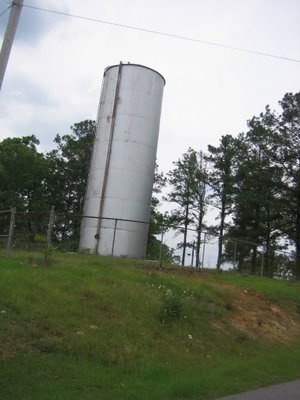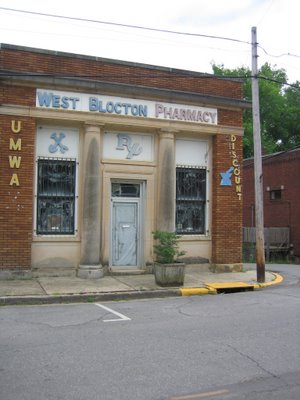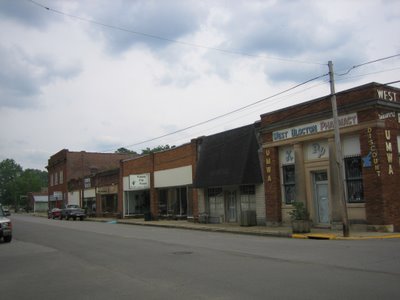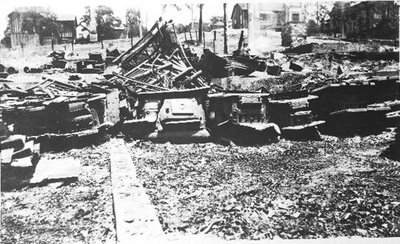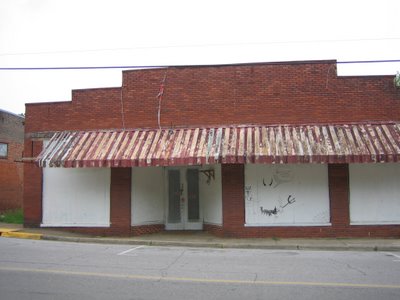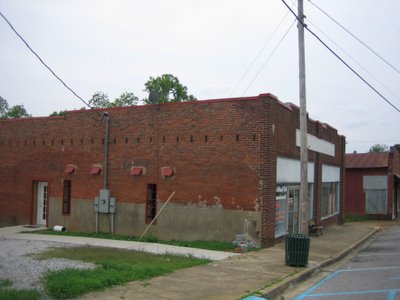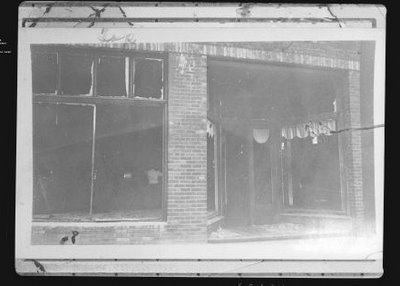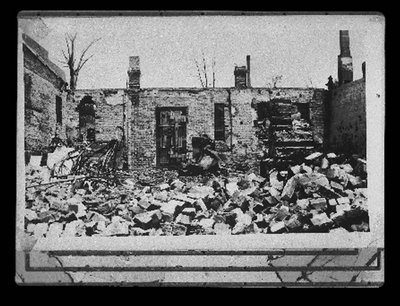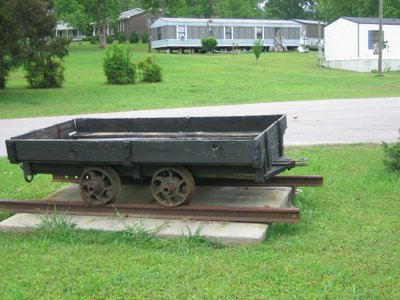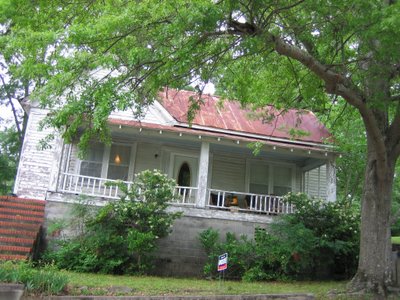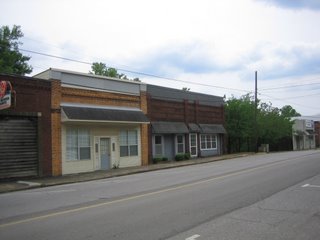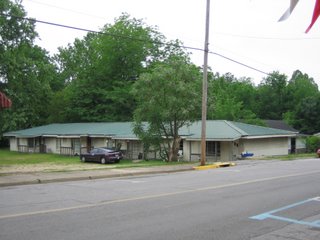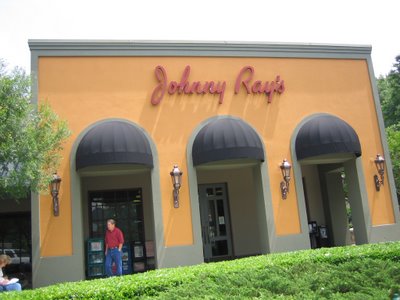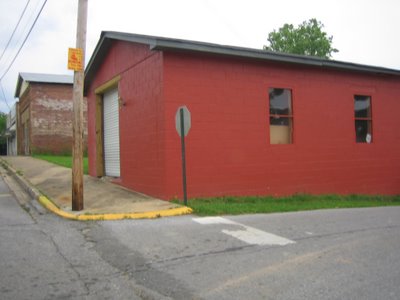 This corner lot where the red building now stands is where Arrie Clements (formerly Mrs. D.L. Worthington) had her grocery store. She was Dorothy Arrie Stewart Clements, who was widowed at a young age with five young children, and who remarried, had another daughter named Elva Odell Worthington Waugh (Elva), and soon thereafter divorced Mr. Worthington. Arrie Stewart Clements was Jerry's mother and my grandmother. We all knew her as Mama.
This corner lot where the red building now stands is where Arrie Clements (formerly Mrs. D.L. Worthington) had her grocery store. She was Dorothy Arrie Stewart Clements, who was widowed at a young age with five young children, and who remarried, had another daughter named Elva Odell Worthington Waugh (Elva), and soon thereafter divorced Mr. Worthington. Arrie Stewart Clements was Jerry's mother and my grandmother. We all knew her as Mama.After leaving Mr. Worthington and leaving her home in the country in Hale County, Mama moved to West Blocton to be near her sister Lela Ann Eliza Wilma Stewart Harris (known as Lela) and her family. Lela's husband was Ira L. Harris, Sr. Arrie changed her name back to Clements after she divorced Mr. Worthington. Lela and Ira had seven children. One of them whom Jerry remembers is Mishia Mauselle Harris (Mauselle), who went to work in Oak Ridge, Tennessee, and another was Julius Lloyd Harris, who became a barber in West Blocton.
Her store had plate glass windows with a door in the front to enter the store. It was a frame one-story building with the store in the front and the family's living quarters in the back.
Some of the wholesalers Mama used had the idea of 9 cent sales to boost store sales. These wholesalers supplied Mama with special promotional signs and banners to advertise the sales, and the sales items were priced at prices ending in 9 cent intervals. In other words, sale items were $ .09, .19, .29, .39, etc. You get the idea, and this was an innovative advertising and sales strategy for the times.
What happened to the Clements family and The Clements Grocery Store During the Fire?Behind the store was an open field that sloped downward and eventually went upward again to the residential neighborhood behind the business district. During and after the fire, Arrie and her children tried to salvage what they could from the store and their living quarters, and they piled it up in the open field behind their store. There wasn't much to save, but Mamma got the cash box from the store and everyone had the clothes they were wearing that day. Jerry went back some time later after the fire had died completely out and found Mama's old pistol in the ashes of the store.
Mama's store was about four doors away from the hardware store.
As the fire swept through the town, the town fathers and officials tried to devise some way to stop its spread. One scheme they came up with was to blow up the hardware store with dynamite, in the hope that the vacant space left behind would stop, or at least slow down, the fire.
The owner of the hardware store was a nice man, whose name Jerry cannot recall at the moment, and Jerry thinks the owner might have had some connection with the fire department. But anyway, the hardware store was a very deep building that extended way back from the street.
In the rear of the store were supplies of barbed wire, dynamite, shotgun shells and bullets. So, using dynamite from the back of the store, the townspeople blew up the front of the store. Unfortunately, this strategy didn't do any good at all, and when the fire reached the back of the store, it heated up and burned the shells and bullets, which then started shooting off at random, in all directions, making a tremendous noise as they went off, and frightening eveyone in town because they didn't have any way of knowing which way the bullets were coming.
The hardware store was in the middle of the area that was burned, about half way down in both directions, and it, along with everything in the fire's path, was completely destroyed.
After the Clements family had moved as much as they could out of the store before it was consumed in fire, they just stayed as a family in the back lot with their meager possessions, partly from the shock of what had happened so suddenly that day in July, and also to protect their possessions from any possible looters or thieves.
Later that day, Jerry left to walk all around the town of West Blocton, to survey the damage from the fire. The devastation was everywhere, and many smaller fires were still burning, with hot ashes and coals all over the place, which were especially treacherous if you were walking around barefoot in the summer.
The night of the fire, the Clements family went to stay a few days with the preacher and his family who generously took in the family of seven. The preacher's house was located on the hilly area behind the main business district, and almost directly behind the Clements store. We drove around there looking for the house, and narrowed it down to a few likely prospects, but it may have been torn down in the intervening years.
What happened to the Clements family after the fire? Soon after, the Red Cross came to town and gave the townspeople affected by the fire some basic supplies for starting over and getting their lives back together. Jerry remembers that the Red Cross gave him a pair of gray-black trousers that were made of a thick, fuzzy fabric, perfect for mid-July in Alabama! But he wore them just the same.
At this time, Jerry worked at the Silver Moon Cafe. He wonders how it happened that he stopped working at the Manring Hotel and started at the Silver Moon, but we finally concluded that this was a plan worked out by Mama and Mrs. O'Reilly of the Silver Moon, and they just told Jerry what to do and when, like you do with young children.
Someone gave Jerry, Johnnie and Aubrey the job of gathering, cleaning and stacking burned bricks from the fire. He was paid the grand sum of 1 cent per brick, and it seemed like a fortune in those days, and under those circumstances.
Later Mama opened another store in town, but the location was not desirable, and the store didn't do well at all. So when she had the chance, she moved her store to a far better location and was back in business again. Mama never complained about the adversities in her life, but accepted the good and the bad with grace and composure. She never felt she was the victim, and she never expected anyone to rescue her from adverse circumstances.
Somewhere along the line, Mrs. Manring from the Manring Hotel gave Mama some work and some extra money to wash the sheets and linens from the hotel. (Jerry thinks it was more of a favor to Mama to help her out after the fire than anything else.) Mama set up the washing operation in the family's living quarters, and went to work washing, rinsing, squeezing the water out, and hanging the sheets and whatever all over the house to dry. Then they had to be folded and returned to Mrs. Manring.
At this point in her life, Mama's hands and fingers were not as strong as they were in her younger days, and she couldn't squeeze much water out of the wash, so she had Jerry help her with the squeezing out of the wash and rinse water. When Jerry came home from his job at the Silver Moon Cafe, he set to work helping Mama with the washing, rinsing, squeezing out water, and hanging up the wash. In her kind and encouraging way, Mama always praised young Jerry to the skies for his big, strong hands that could squeeze that water out so well, and his big, strong arms that could hang up those sheets so well. His chest swelled with pride for being such a good helper to his Mama!
Mama never complained, not once, about the hardships she encountered in life, and never, ever thought of herself as a victim. And she never expected anyone else to solve her problems or give her charity. An amazing woman, whose strong character and example of how best to live one's life serve as a beacon of hope to those of us living in today's tumultuous world.
A few years later, with the help of his oldest brother Aubrey, Jerry moved to Montgomery to go to school at Sidney Lanier High School. Aubrey also helped Jerry get several newspaper routes in the south side of Montgomery to help pay living expenses for room, board and rent.
Back in West Blocton, Mama had decided to move back to the country in Hale County where she still owned a small farm that she and her husband Jeremiah E. Clements had acquired shortly after their marriage in 1909. They had paid off an existing mortgage and then received the title to the property near Grandma Stewart's house. The property had no house on it, except a barn, so the newlyweds lived in the barn for a time until they were able to acquire better accomodations.
Jerry's brother Johnnie was still working for the soft drink distributor in West Blocton, and he was able to make a deal to acquire a vacant dwelling owned by the coal mine operators. So he and the family set about dissassembling the house, taking it apart piece by piece, board by board, peg by peg. He was careful to label each door, window, each piece to make it easier to reassemble in the country. He even saved the hinges, screws and nails. Then he moved it by truck to the farm where Mama and the younger children (Bill, Esther and Elva)reconstructed their house, which was truly an amazing feat when you think about it.
When Mama noticed that the wooden floor was worn out, she had the idea of switching the (worn out) wooden floor for the (not worn out) wooden ceiling. So she ended up with a virtually new floor in her new home!
The older children Aubrey, Johnnie and Jerry had moved away, so she took the younger ones (Bill, Esther and Elva) with her to the farm. Their first few years were nothing but hardship and poverty, with a good bit of misery mixed in, but never any complaining that anyone knew of. The older boys sent them money when they had some to spare, which was not all that often, but they did their best to take care of the family.
Mama had a mule, but no harness or collar for the mule to plow with. Being the resourceful woman that she was, she went to the woods and found a tree in just the right shape, cut it down, and made the collar out of that. She used old wire for the harness and reins, and somehow she got that field plowed and planted, and managed to raise some crops that year.
Another good thing that happened was a federal government program to help farmers in these very rural areas. The program gave the community pressure cookers and cans so they could can their excess produce and meats, to save it for the winter season when food was scarce. This was such a big help, and then the farmers banded together to share their canned goods with each other, and balance out their diets.
The schools in the area were very poor, and at one point ran out of money, and closed altogether at Christmas time. So Bill, Esther and Elva had no school to go to. When Aubrey heard of it, he rented a house and made arrangements for them to come live with him in Greenwood, Mississippi, where they had decent schools, and that's how the younger children were able to complete their schooling. Aubrey was working as a cashier at National Biscuit Company there, and borrowed an automobile from someone and brought his younger brother and sisters to Mississippi.
Many years later, when Aubrey was in his 90's, he spoke proudly about how the months at Greenwood School had inspired his younger brother and sisters. He felt that it was this experience that led William Webster to enroll at Auburn University and become a veterinarian after his war service.
Somehow they all made it through these difficult times, with a combination of hard work, ingenuity, a little luck, and the grace of God, not necesarrily in that order.

